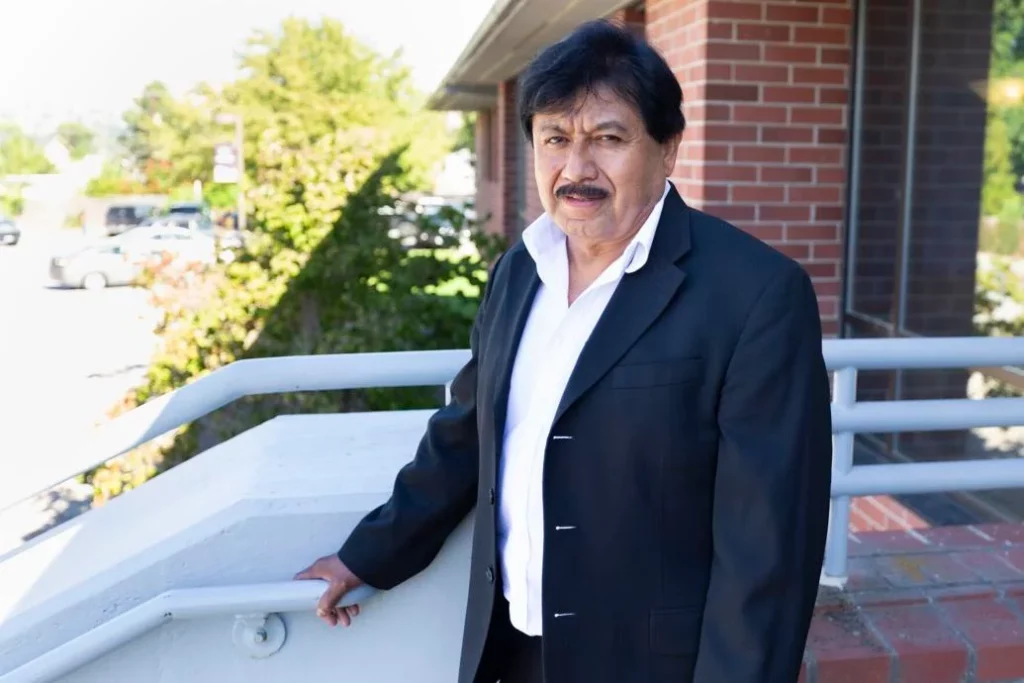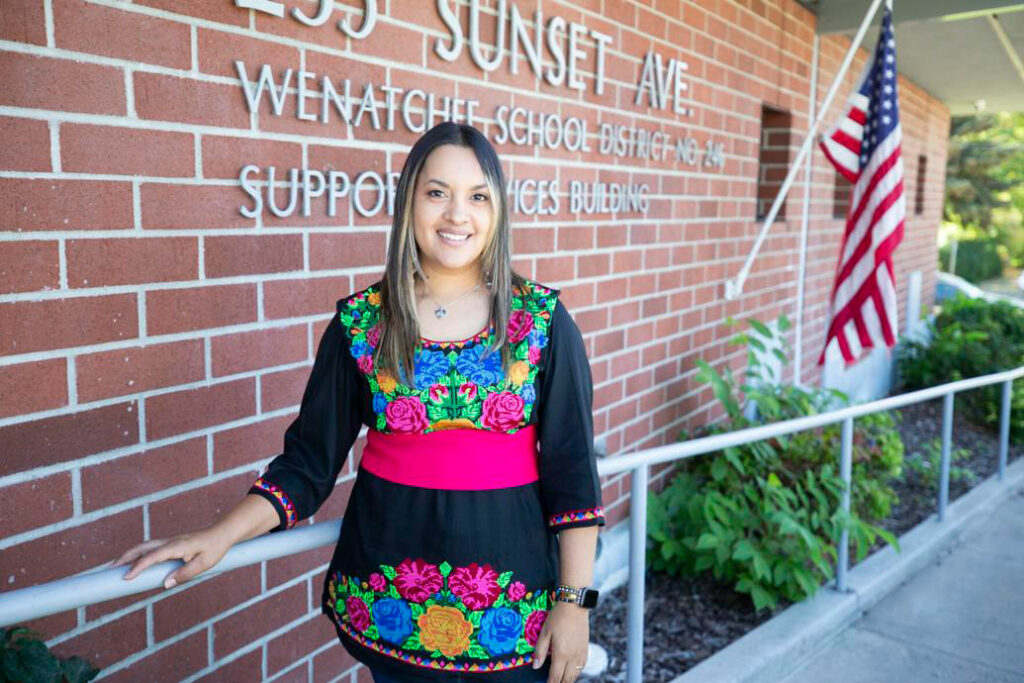
Bilingual and bicultural: How Wenatchee’s dual language programs are transforming education
Listen
(Runtime 1:16)
Read
By Reneé Diaz and Jenni Rodas, Wenatchee World
Dual language programs, according to Washington’s Office of Superintendent of Public Instruction, are the most effective educational model for both multilingual learners and native English speakers. The Wenatchee School District is one of many school districts that use this model to help students maintain and develop their home languages while acquiring proficiency in English.
“As the population has become more diverse, the need for being bilingual, biliterate and bicultural is imperative nowadays,” said Alfonso Lopez, Wenatchee School District’s director of Hispanic and Latino relations.

The Wenatchee School District is becoming more diverse. According to an OSPI report card for the 2023-2024 school year, 54.4% of the district’s population is Hispanic or Latino. Of the student population, 76.5% are non-English language learners. That means that in their household, they have another first language that isn’t English.
Dual language programs involve instruction where students learn literacy and content in English and another language. These programs begin in preschool or kindergarten and extend through 12th grade. Many programs, like Wenatchee’s, teach programs in Spanish and English. Some schools use other languages, including tribal languages, as the partner language.
Currently, Washington state has about 148 dual language schools across 40 school districts. In March, Gov. Jay Inslee signed House Bill 1228. The law provides grants to school districts and state-tribal schools to expand dual language programs statewide.
“There is an explosion of dual language programs in the state. Every district is thinking about or they are implementing dual language,” Lopez said.
Lewis and Clark Elementary School is a dual language school in the Wenatchee School District. Students spend half the day learning English and half the day learning Spanish.
Next year, the district might start rolling out dual language programs into middle schools. Lewis and Clark has over 400 students enrolled in the program, and it has become a model for other schools seeking to implement a dual language program.
The elementary school uses a two-way dual language program that enrolls an equal mix of native speakers of the partner language and native English speakers, fostering a diverse group of multilingual learners who learn from each other.
“Students see that home languages are important and they’re in an atmosphere where multilingualism is embraced. People might even ask them, ‘How do you say that in your home language?’ It creates a different narrative in school than English, which is the only thing that counts,” said Kristin Percy Calaff, the executive director of multilingual and migrant education at OSPI.
Parents can also choose to enroll their students in Lewis and Clark for dual language instruction, according to the district website.
A large population of multilingual learners are migrant students. These are children who move frequently from one school to another due to their family’s seasonal work, often in agriculture.
Calaff said a challenge these students face is repeated relocations, which can disrupt their education. Migrant students who frequently move are at a high risk of falling behind, as it may be hard for them to catch up. OSPI requires schools to have similar curriculums and models to make transitions easier for students who relocate.
“What really helps is consistency. This helps students maintain their education and not start over if they move back and forth,” Calaff said. “A really important part of dual language is maintaining a language.”
Lopez said that dual language programs are important not just for fostering language learning skills but also for enhancing cultural understanding. In these classrooms, students simultaneously learn about their own cultural identity while learning more about another culture.
Each household is different. Some students don’t speak their second language at home, and some do. There are many children in Hispanic or Latino families that have lost their native language partially or completely because they do not speak it consistently at home, Calaff said. This causes not only a loss of language, but also a loss of heritage.
“Most of the kids have lost their Spanish, that is a big disadvantage. They are also losing part of their culture too. If they don’t speak Spanish, there are many things that you cannot say in English because they belong only to Spanish,” Calaff said.

Children without access to dual language and immersion programs develop language skills more slowly, according to a study in the Journal of Experimental Child Psychology. This slower development may result from the cognitive demands of juggling two languages — one used formally in class and the other informally at home. Without educational guidance, bilingual students may struggle with code-switching, leading to confusion.
“As educators, we cannot base everything on just one test score. It’s crucial to understand each student as a whole,” said Nancy Navarro-Ortiz, the migrant education program coordinator for the Wenatchee School District. “I am a product of the migrant education program. I went through the same challenges with less structure support than what students have access to now and has taken that to improve educational models over time,” Navarro-Ortiz said.
To foster cultural connections, Lopez, previously the principal at Lewis and Clark, played a key role in pioneering the dual language program in the district.
To spread the word and foster connections with parents of students in the Latino community, he said it was important to meet them where they are. On his own time, he wrote for the Spanish newspaper ‘El Mundo’ and produced radio broadcasts to Spanish-speaking families about the dual language program.
Lopez’s communication efforts engaged more parents, leading to the program’s growth.
“We have had this program for 17 years and we know that it works,” he said. “According to research, people that are learning a second language need at least seven years to learn.”
The model the district uses for the dual language program consists of instruction provided in both languages with goals of bilingualism, biliteracy, high academic achievement, and sociocultural competence, according to the district website.
Research from OSPI indicates that dual language education is highly effective. Students in dual language programs consistently score above average on English reading tests, whether they are native English speakers or multilingual learners. Additionally, they perform well across other academic subjects.
OPSI also encourages families to commit to the program since it’s only effective if the student is in it for at least six or more years. Ideally, the student should be in the program all the way through high school to ensure full effectiveness.
“When you recognize that all students are language learners you’ll naturally provide the necessary support for all of them regardless of who they are or where they come from,” Navarro-Ortiz said.
Reneé Diaz may be contacted at diaz@wenatcheeworld.com. Collaborative reporting by The Wenatchee World, NWPB and WSU’s Murrow College of Communication Newsroom Fellowship.
















